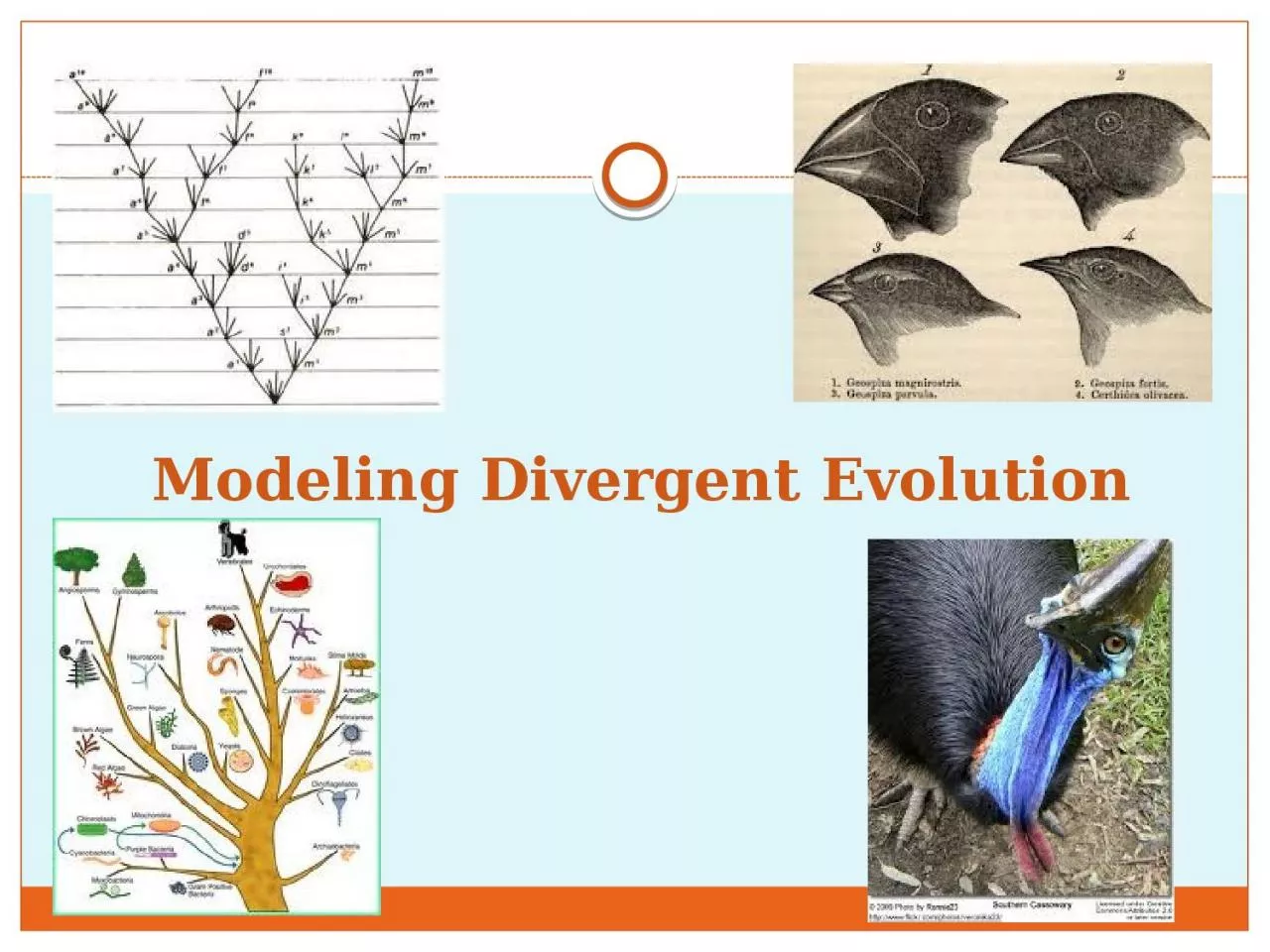

Warm Up Set up your notes in your notebook Page 55 Title Cladograms Date 118 EQ How can I model divergent evolution Standard B8B Categorize organisms using a hierarchical classification system based on similarities and differences shared among groups ID: 1021800
Download Presentation The PPT/PDF document "Modeling Divergent Evolution" is the property of its rightful owner. Permission is granted to download and print the materials on this web site for personal, non-commercial use only, and to display it on your personal computer provided you do not modify the materials and that you retain all copyright notices contained in the materials. By downloading content from our website, you accept the terms of this agreement.
1. Modeling Divergent Evolution
2. Warm Up: Set up your notes in your notebookPage: 55Title: CladogramsDate: 1/18EQ: How can I model divergent evolutionStandard: B8B Categorize organisms using a hierarchical classification system based on similarities and differences shared among groups
3. Essential question: How can I model divergent evolution?Standard: B8B Categorize organisms using a hierarchical classification system based on similarities and differences shared among groups
4. Cladograms by Bozeman
5. Divergent evolution describes evolution toward different traits in closely related species. Divergent evolution can lead to speciation.kit foxancestorred fox
6. EVOLUTIONARY CLASSIFICATIONBiologists group organisms into categories that represent lines of evolutionary descent, or phylogeny, not just physical similarities.What is Phylogeny: The study of evolutionary relationships among organisms.
7. CladogramsABCDEFSpeciation: formation of two new species from oneClade or lineageTIME
8. Classification using Cladograms Cladograms are diagrams that use derived characteristics to illustrate evolutionary relationships. What is a Clade: A group of organisms, such as a species, whose members share homologous features derived from a common ancestor.
9. ABCDEFSpeciation: formation of two new species from oneClade or lineageTIMEClassification using Cladograms
10. Classification using CladogramsThe cladogram on the next slide shows the evolutionaryrelationship among several vertebrates.
11. Fur & MammaryGlandsJawsLungsClaws or NailsFeathersHagfishFishFrogLizardPigeonMouseChimpClassification using CladogramsSpeciation: formation of two new species from oneDerived Characteristics
12.
13. Cladogram Mini LabDinosaursDerived TraitABCDEFGHole in Hip socketYesYesYesYesYesYesYesExtension of pubis boneNoNoNoYesYesYesYesUnequal enamel on teethNoNoNoNoYesYesYesSkull has “shelf” in backNoNoNoNoNoYesYesGrasping HandsYesYesYesNoNoNoNoThree- Toed FootYesYesNoNoNoNoNo
14. VertebraTwo1456SharksRay finned fishesAmphibiansPrimatesRodents & RabbitsCrocodilesDinosaurs23
15. Grasping HandThree –Toed Hind Food13456ABCDEFG2
16. CHAMPSC- Talk with the person next to you onlyH- Raise your hand and wait patientlyA- Work on the assignment until it is completeM- Stay in your seat unless you need to sharpen your pencilP- Complete the activity and help your partnerComplete your cladogram assignment by the end of class
17. For 1-8Crushing MouthpartsSegmented BodyAbdominal appendages
18. What do the lizard, pigeon, mouse, and chimp all have in common?